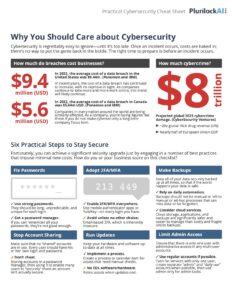Introduction
In the complex landscape of cybersecurity, one threat vector stands out for its sophistication, longevity, and potential devastation – the Advanced Persistent Threat (APT). APTs represent a breed of cyber attacks that go beyond the conventional hit-and-run tactics of opportunistic hackers. Instead, they employ a calculated blend of meticulous planning, sophisticated techniques, and persistent efforts to infiltrate and remain undetected within a target network for extended periods. This deep dive will delve into the realm of APTs, exploring their nature, significance, and the intricate factors that render them a critical concern in the contemporary cybersecurity landscape.
Defining the Advanced Persistent Threat
At its core, an APT is a highly targeted, well-coordinated cyber attack that is conducted over a prolonged period with the primary objective of exfiltrating sensitive information or disrupting critical operations. APT attackers, often state-sponsored or organized criminal groups, invest considerable time and resources in reconnaissance, infiltration, lateral movement, and data exfiltration. The term “persistent” highlights their determination to maintain a foothold in the target environment, adapting to defensive measures and avoiding detection.
Characteristics of APTs
- Sophisticated Techniques: APTs leverage advanced tools, techniques, and procedures (TTPs) that often surpass the capabilities of common cybercriminals. Zero-day vulnerabilities, custom malware, and evasion mechanisms make their attacks difficult to identify and mitigate.
- Long-Term Engagement: Unlike opportunistic attacks, which may last hours or days, APTs unfold over months or even years. Attackers patiently exploit vulnerabilities, gather intelligence, and move laterally within the network to avoid detection.
- Customization and Targeting: A hallmark of APTs is their precise targeting. Attackers tailor their approach to specific organizations or individuals, conducting thorough reconnaissance to understand the target’s infrastructure, personnel, and vulnerabilities.
- Lateral Movement: APTs focus on navigating laterally within a compromised network. By infiltrating internal systems, attackers can access more sensitive data, escalate privileges, and maintain control.
- Data Exfiltration: The end goal of most APTs is the extraction of sensitive information, whether it’s intellectual property, financial data, or classified government documents. This stolen data holds substantial value on the black market or in the hands of geopolitical rivals.
Why APTs Matter: The Impact and Consequences
The significance of APTs stems from their potential to inflict severe damage on individuals, organizations, and even nations. The following points underscore their importance:
- Economic Espionage: APTs are often attributed to nation-states seeking to gain economic advantage by stealing trade secrets, research and development data, and proprietary information. This can significantly impact a nation’s economic stability and competitiveness.
- Critical Infrastructure Vulnerability: APTs pose a grave threat to critical infrastructure sectors such as energy, transportation, and healthcare. A successful attack could disrupt essential services, causing chaos and potential loss of life.
- National Security: When state-sponsored actors are behind APTs, the stakes are elevated. These attacks can target government agencies, military installations, and diplomatic communication networks, jeopardizing national security.
- Data Privacy and Compliance: Organizations falling victim to APTs may suffer from data breaches, leading to legal consequences, reputational damage, and loss of customer trust. Compliance with data protection regulations becomes a challenge in the aftermath of a breach.
- Innovation Drain: Intellectual property theft via APTs can impede innovation by eroding the competitive edge of businesses and hindering breakthrough research and development efforts.
In-Depth Analysis: The Importance of APTs
- Stealth and Persistence: APTs emphasize stealth and persistence as primary strategies. Attackers employ advanced evasion techniques to evade security solutions, while their prolonged presence increases the likelihood of achieving their goals. By avoiding detection, they can extract valuable data or maintain unauthorized access over an extended period.
- Targeted Intelligence Gathering: The level of reconnaissance that precedes an APT attack allows threat actors to understand the target’s environment, behaviors, and weaknesses. This information informs their attack strategy, enabling more precise and effective compromise.
- Nation-State Operations: State-sponsored APTs are potent instruments of geopolitical conflict. Nations engage in cyber espionage to gather intelligence, monitor adversaries, or disrupt rival operations. The interconnectedness of cyberspace amplifies the potential impact of these operations on international relations.
- Evolving Tactics: APT tactics continually evolve to exploit new vulnerabilities and evade emerging defenses. The cat-and-mouse game between attackers and defenders drives innovation on both fronts, forcing cybersecurity professionals to adapt and develop more robust security measures.
- Supply Chain Vulnerabilities: APTs have increasingly targeted supply chains, compromising third-party vendors to gain access to larger networks. This tactic can amplify the attack’s scale and impact, as seen in the SolarWinds incident, where a compromised software update led to numerous high-profile breaches.
Conclusion
The realm of cybersecurity is an ever-changing landscape where threats constantly evolve to exploit new vulnerabilities and challenges. Advanced Persistent Threats (APTs) embody the epitome of this evolution, combining meticulous planning, sophisticated techniques, and persistent engagement to achieve their objectives. As demonstrated through their impact on economies, critical infrastructure, and national security, APTs transcend conventional cyber attacks, posing a multifaceted threat that demands unwavering attention and innovative defenses. Organizations, governments, and cybersecurity professionals must recognize the significance of APTs and collaborate to fortify digital landscapes against these persistent and insidious threats.












